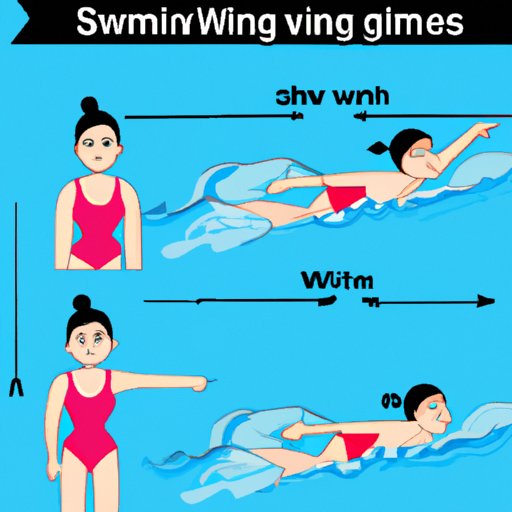
Introduction
If you’re looking for a fun way to stay in shape, swimming is definitely worth consideration. Not only does it provide a full-body workout, but it is also a low-impact exercise that puts less stress on your joints than other activities like running. Additionally, swimming can be a great way to reduce stress and unwind. However, for beginner swimmers, it can be intimidating to start a new exercise routine in the water. Fear not, because we’ve put together a beginner’s guide to swimming for exercise that will provide you with everything you need to know to hit the pool with plenty of confidence.
“5 Tips for a Successful Start to Your Swimming Workout Routine”
Before you jump right into the water, it is crucial to be properly equipped. You’ll need a few key pieces of gear, including a comfortable swimsuit, a swim cap, and goggles. These can not only help keep you comfortable in the water but also help you keep your focus on your technique and breath work.
Next, it’s important to set goals that are both challenging and achievable. If you’re new to swimming, aim to start small and work your way up. Doing too much too soon can lead to burnout or even injury, but starting slowly and gradually building up your endurance can help you form good habits and see steady progress.
Another important rule of thumb is to resist the temptation to try to do too much too soon. While you may be excited about your new pool routine, it’s important to ease into it and start with shorter sessions, gradually increasing your time and distance as you become more comfortable in the pool.
Finally, it’s not a bad idea to join a supportive swimming community. Not only can experienced swimmers help you correct your form or offer tips, but swimming alongside others can also provide encouragement to stick with your workouts and help you reach your fitness goals.
“From Treading Water to Freestyle: A Beginner’s Guide to Swimming for Fitness”
The most important decision you’ll need to make when starting swimming for exercise is which strokes you want to focus on. Some of the most common options include the freestyle, backstroke, breaststroke, and butterfly. While each stroke has its own advantages, the freestyle is a great place for beginners to start. It’s an efficient and speedy stroke that relies on a constant flow of air and kicking to propel you through the water.
One of the most challenging aspects of swimming is getting the breathing technique right. When you are in the water, resist the temptation to hold your breath as you swim. Instead, inhale through your mouth and exhale through your nose or nose and mouth. Ideally, you should aim to take a breath every other stroke in your freestyle or backstroke drills, and every stroke in your breaststroke or butterfly drills.
“How Swimming Can Benefit Your Body and Mind: A Beginner’s Perspective”
There are a plethora of benefits to swimming for fitness. One of the major advantages is how it can help cardiovascular health. Swimming can help lower blood pressure, improve circulation and even prevent heart disease. Additionally, swimming can work your whole body without putting too much strain on your muscles and joints, making it an excellent option for people with arthritis or other chronic pains.
Another major benefit of swimming is its stress-relieving capabilities. Endorphins are released in the body during exercise, and swimming is no exception. These feel-good chemicals can provide a great deal of relief for mental and emotional stress.
“Overcoming Common Obstacles for New Swimmers: Positioning, Technique, and More”
One of the most common challenges for new swimmers is learning how to position your body in the water. It’s essential to keep your head, spine and hips aligned to ensure maximum efficiency in your swimming motions. Additionally, stroke technique often presents challenges for beginners. You should aim to keep your form as streamlined as possible by using a gentle, relaxed stroke. Remember, the smoother the stroke, the faster you will swim.
“Swimming: A Mixing Pot of Fun and Fitness”
Swimming isn’t just about laps anymore – there are many ways to mix up your aquatic workout routine. One great option is to try swim circuits. These are usually timed and consist of four to six different exercises. Alternatively, you can do interval training by swimming at your fastest possible pace for a short period of time, taking a break, and then doing it again. Another great option is to do sprints. These are fast, intense swims that have a profound impact on your fitness level and stamina.
Ultimately, the key to a successful and sustainable swimming routine is to find enjoyable activities that you look forward to. Whether you’re doing laps, sprints, circuits or other forms of aquatic exercise, it’s important to keep in mind that the fundamental goal is to move and have fun.
Conclusion
Starting to swim for exercise can feel intimidating, but with the right mindset and a few key tips and tricks, you can get off to a strong start and enjoy all the mental and physical benefits that this fantastic workout option provides. Remember to start with attainable goals, stay focused on proper form and technique, and connect with other supportive swimmers to make the most of your pool experience.





